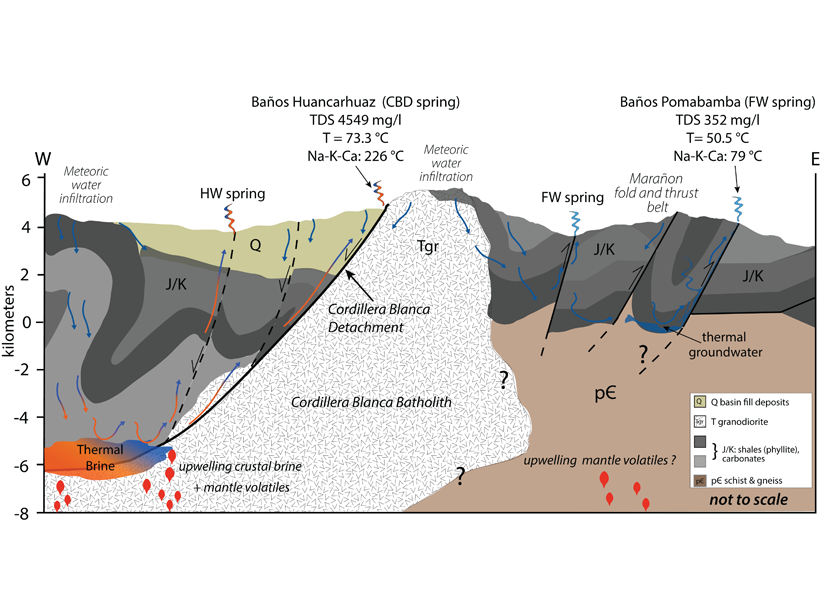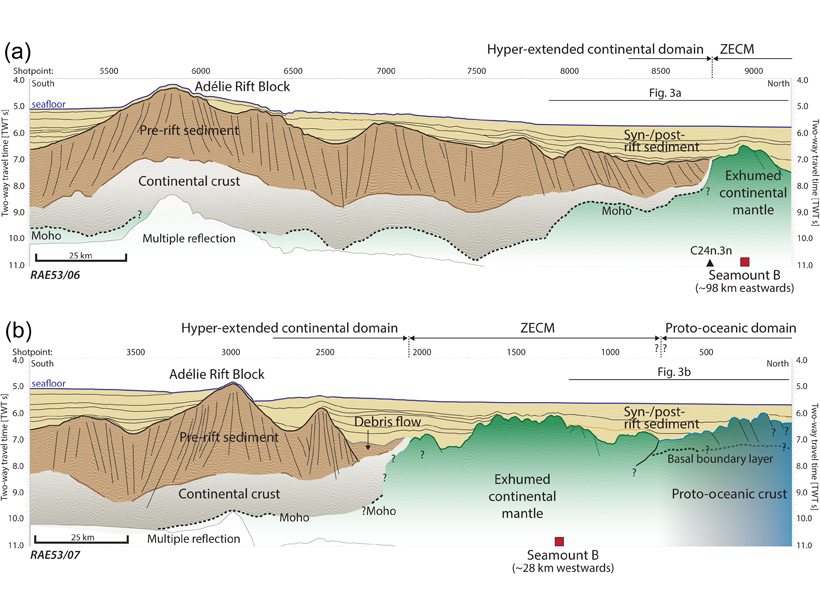Variations in hot spring geochemistry from adjacent mountain ranges with different styles of faulting highlight the influence of crustal-scale structures on circulating fluids in the Peruvian Andes.
W. Behr
Editor, G-Cubed
Posted inEditors' Highlights
New Data from Earth’s Largest Non-Volcanic Rift Margin
Seismic reflection images combined with petrological data provide new constraints on the nature of the basement in the enigmatic Australia-Antarctic oceanic-continent transition zone.


